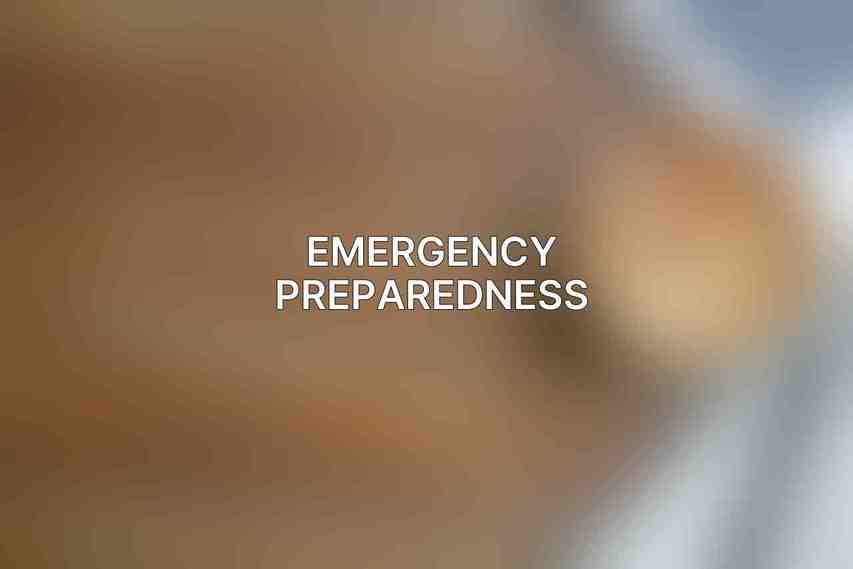In recent years, boondocking has seen a surge in popularity among avid RV enthusiasts and adventure seekers. Boondocking, also known as dry camping or dispersed camping, involves setting up camp in remote or off-grid locations without access to amenities like water or electricity hookups. As more people embrace this nomadic lifestyle, it is crucial to prioritize safety while enjoying the freedom and serenity of boondocking.
Ensuring a safe boondocking experience requires careful planning, preparedness, and adherence to essential safety protocols. From site selection to emergency preparedness, each aspect plays a vital role in safeguarding both individuals and their recreational vehicles (RVs) in diverse off-grid environments.
| Product | Description | Link | |||||||||||||||||||||||||||||||||||||||||||||||||||||||||||||||||||||||||||||||||||||||||||||||||
|---|---|---|---|---|---|---|---|---|---|---|---|---|---|---|---|---|---|---|---|---|---|---|---|---|---|---|---|---|---|---|---|---|---|---|---|---|---|---|---|---|---|---|---|---|---|---|---|---|---|---|---|---|---|---|---|---|---|---|---|---|---|---|---|---|---|---|---|---|---|---|---|---|---|---|---|---|---|---|---|---|---|---|---|---|---|---|---|---|---|---|---|---|---|---|---|---|---|---|---|
| RV Safety and Education | RVT.com offers a variety of resources for RV owners, including safety tips, educational articles, and a directory of RV parks and campgrounds. | https://www.rvt.com/ | |||||||||||||||||||||||||||||||||||||||||||||||||||||||||||||||||||||||||||||||||||||||||||||||||
| RV Safety Checklist | This checklist can help you ensure that your RV is safe for travel and that you have all the necessary equipment and supplies. | https://www.rvt.com/rv-safety-checklist/ | |||||||||||||||||||||||||||||||||||||||||||||||||||||||||||||||||||||||||||||||||||||||||||||||||
| Boondocking Safety Tips | Boondocking is a great way to experience the outdoors in your RV, but it’s important to take precautions to stay safe. These tips will help you prepare for your next boondocking trip. | https://www.rvt.com/boondocking-safety-tips/ | |||||||||||||||||||||||||||||||||||||||||||||||||||||||||||||||||||||||||||||||||||||||||||||||||
| Visit RVT.com | |||||||||||||||||||||||||||||||||||||||||||||||||||||||||||||||||||||||||||||||||||||||||||||||||||
Site Selection and Preparation

Before embarking on a boondocking adventure, thorough research into potential campsites is essential. Opt for sites in open areas with clear lines of sight, allowing for better observation of surroundings and potential hazards. When parking your RV, leveling it is crucial for stability and to prevent any rolling accidents. Additionally, securing loose items both inside and outside the RV minimizes the risk of damage while on the road or in windy conditions.
| Site Selection and Preparation Tips: |
|---|
| 1. Thoroughly research campsites |
| 2. Choose open areas with clear views |
| 3. Level RV for stability |
| 4. Secure loose items |
Water Conservation
Water conservation is a key consideration during boondocking trips, where access to fresh water sources may be limited. It is essential to bring an ample water supply, accounting for daily consumption and emergencies. To conserve water, use biodegradable soap, take short showers, and minimize dishwashing. Installing a water filtration system can also ensure a safe and sufficient drinking water supply throughout your adventure.
| Water Conservation Tips: |
|---|
| 1. Bring sufficient water supply |
| 2. Conserve water with eco-friendly practices |
| 3. Consider water filtration system |
Power Management

In off-grid locations, managing power efficiently is critical for maintaining essential functions in your RV. Consider investing in a solar panel system or a generator to generate electricity for your appliances and devices. Regularly monitor battery levels and charge them as needed to avoid unexpected power shortages. To conserve energy, use LED lights, unplug appliances when not in use, and switch off electronic devices to prolong battery life.
| Power Management Tips: |
|---|
| 1. Install solar panels or generator |
| 2. Monitor and charge batteries |
| 3. Conserve energy with smart practices |
Security Measures
As safety should always be a top priority, implementing effective security measures is crucial during boondocking trips. When leaving the RV unattended, lock all doors and windows to prevent unauthorized access. Consider installing security cameras or motion sensors to enhance surveillance capabilities. Parking in well-lit areas or near other campers can also deter potential intruders. Maintain awareness of your surroundings and promptly report any suspicious activity to ensure a safe environment for yourself and fellow campers.
| Security Measures Tips: |
|---|
| 1. Lock doors and windows when away |
| 2. Install security cameras or motion sensors |
| 3. Park in well-lit areas or near others |
Safety Equipment
Equipping your RV with essential safety gear can make a significant difference in handling emergencies effectively. Ensure you have a fully functional fire extinguisher and a well-stocked first aid kit on board. Packing essential tools for minor repairs and unexpected breakdowns can help you address technical issues promptly. For added security, consider carrying a personal locator beacon or a satellite communication device to signal for help in remote areas.
| Safety Equipment Checklist: |
|---|
| 1. Fire extinguisher |
| 2. First aid kit |
| 3. Tools for repairs |
| 4. Communication devices |
Emergency Preparedness

No matter how well-prepared you are, emergencies can still occur during boondocking adventures. Establishing a comprehensive emergency plan and communicating it with all occupants is vital for swift and organized responses. Familiarize yourself with the locations of nearby medical facilities and evacuation routes in case of medical emergencies or natural disasters. It’s also wise to inform a trusted individual of your itinerary and expected return date, providing an added layer of safety and accountability.
| Emergency Preparedness Guidelines: |
|---|
| 1. Create and communicate emergency plan |
| 2. Know nearby medical facilities and evacuation routes |
| 3. Share itinerary with a trusted contact |
RVT.com Enhanced Security
For RV enthusiasts seeking additional support and resources for their boondocking journeys, RVT.com offers a range of enhanced security features and services. By utilizing the RVT.com app, users can access real-time safety alerts, keeping them informed about potential risks or changing conditions in their surroundings. Additionally, connecting with other RV enthusiasts through the platform allows for valuable information sharing and support within the community. Moreover, RVT.com’s 24/7 roadside assistance provides peace of mind for travelers, offering prompt help in case of mechanical breakdowns or emergencies on the road.
With a strong emphasis on safety, preparedness, and community support, boondocking enthusiasts can enjoy memorable adventures while minimizing risks and ensuring a secure and enjoyable experience in the great outdoors.
By following these essential safety tips for boondocking, RV travelers can embark on their off-grid excursions with confidence, knowing they are well-prepared to handle challenges and emergencies that may arise along the way. With the right mindset, equipment, and practices in place, boondocking can offer a unique and rewarding way to explore nature and create lasting memories on the road.
Frequently Asked Questions
What is boondocking?
Boondocking refers to camping in remote areas without the amenities like water, electricity, or sewer hookups typically found in established campgrounds.
Is boondocking safe?
Boondocking can be safe if you take appropriate safety precautions and research the area beforehand. Always be aware of your surroundings and trust your instincts.
What should I pack for a boondocking trip?
Essential items to pack for a boondocking trip include ample water, food, a first aid kit, extra clothing layers, a flashlight, navigation tools, and a communication device.
How do I find a good boondocking spot?
Research online resources, consult boondocking guidebooks, ask fellow RVers for recommendations, and scout potential spots in person before committing to a site.
What are some safety tips for boondocking?
Some essential safety tips for boondocking include telling someone your plans, being self-sufficient, staying aware of your surroundings, practicing fire safety, and respecting wildlife and the environment.

